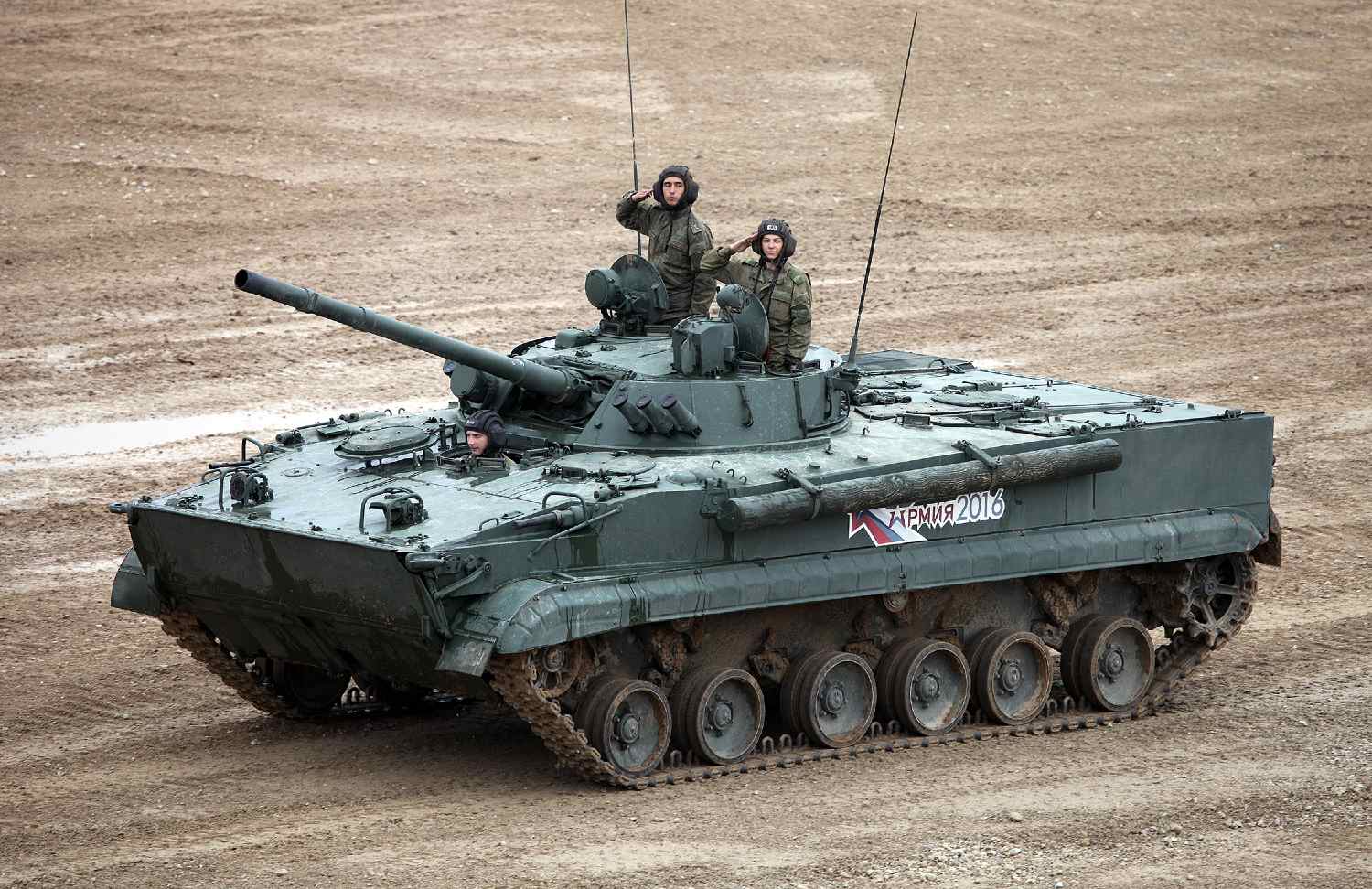The Russian army has received a fresh batch of BMP-3 Infantry Fighting Vehicles (IFV) from Kurganmashzavod, the state-owned arms manufacturer, and is expected to be soon used on the frontlines.
Also, reports reveal the development of an inexpensive and simple kamikaze drone, Privet-82, for mass coordinated strikes is also slated to be received.
The news comes when Ukraine is preparing for its speculated upcoming counteroffensive. Armed with German Leopard 2 and British-made Challenger 2 tanks, along with a massive influx of drones and Western IFVs and Armored Personnel Carriers (APC) like the Stryker and Gepard, it is expected to push through Russian lines in a bid to recapture some of the territory in the east (Donbas) and the south (Zaporizhzhia and Kherson).
Thus Russia’s introduction of the IFV, the drone, the T-90M Provy tank, the Marker combat Unmanned Ground Vehicle (UGV), and the ‘M’ variant of the Ka-52 Alligator signal apparent efforts towards having a diverse range of systems in thwarting and possibly frontally assaulting any Western-backed combined arms counteroffensive by Ukraine.
Addition To Russia’s Arsenal
The BMP-3 IFV is armed with a 100mm gun, a 2A70 launcher with a 30mm 2A72 automatic cannon, and a 7.62mm PKTM machine gun. It has also received a new chassis, engine, weapon system, hydromechanical transmission, and communications system.

Rostec, the parent company of all Russian government defense companies, also claimed “doubled production volumes at the Volgograd site of Kurganmashzavod, which specializes in overhauling army landing equipment BMD-2 and BTR-D.”
“In the near future, another shipment of repaired vehicles will take place,” Rostec said.
Interestingly, unlike most IFVs, the BMP-3 has an unconventional layout, with the engine located in the rear instead of the forward hull. Thus the driver is seated in the front center of the chassis with two other crew members beside him (one on each side).
Thus the driver has an improved view, and the weight is distributed more favorably along the length of the machine. BMP-3 is also equipped with water-jet engines, which are used to overcome water obstacles.
It aligns with the ongoing efforts in indigenous electronic manufacturing that Russia has undertaken since Western sanctions and many lessons learned in the one-year-old war.
Besides transporting personnel to the front line, it is also meant to increase the mobility of troops and offer protection to servicemen on the battlefield.
Another standard employment is joint actions with Main Battle Tanks (MBT), where troop-carrying IFVs, in a mutually supportive role, either break through enemy lines or defend their front.
Cheap, Mass-Produced Kamikaze UAV
The Privet-82 kamikaze UAV is a unique concept, where the First Person View (FPV) drone can be launched from a safe distance of 30 kilometers from behind the frontline. Reports claim it is capable of autonomous flight on preset coordinates and the ability to relay control from one operator to the other.

But the St. Petersburg-based private developer Oko Design Bureau claims its defining feature is using simple electronic components that can be sourced locally. This eliminates the vulnerability to the traditional Russian industrial weakness in electronic and computing hardware manufacturing, where the Western sanctions have largely cut it from American and European sellers.
“The reality is that at the moment, no Russian enterprise can fully deploy a truly large-scale production of tactical drones due to a shortage of element-component base (ECB) and electronic equipment. But these UAVs are needed now – and in large quantities,” said Andrei Ivanov, Oko’s founder, in an interview with Russia Television (RT).
Thus Oko prioritized a design that can be manufactured from “available components, without complex, often expensive electronics.” “Our UAVs, like Kalashnikov assault rifles, must be extremely simple, reliable, and functional,” Ivanov added.
Swarm UAV Strikes
A report in RIA Novosti suggested how this techno-industrial advantage might play out on the battlefield, where several kamikaze drones can simultaneously be sent from a “hub” to a specific target.
“If there is one operator in the unit, he will use them one by one. If there are several operators, it will be possible to deliver a coordinated strike,” said the report quoting Vadim Zhernov, the Oko co-founder.
The 300-kilometer range allows it to be launched from 15 to 20 kilometers behind the frontlines with a five-kilogram warhead. While the drone’s control can be transferred from one operator to another along a long route, the autonomous journey from the launch point to the frontline is complete radio silence with the video transmitter turned off.
It is unclear, however, how the relayed control operation might work if the drone is flying in radio silence mode when the next ground operator needs to take over command of the UAV. It is unknown whether the two operators will have access to an undisclosed means of detecting their drone while transferring command.
- The author can be reached at satamp@gmail.com
- Follow EurAsian Times on Google News




